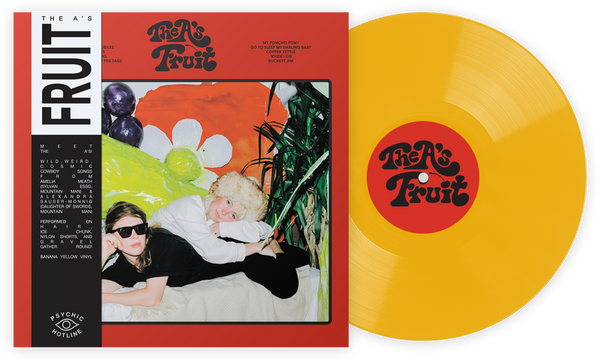Inilah rasanya mendengarkan vinyl ilegal di Rusia
Records Had To Be Made Out Of Whatever Was Available, Including X-Rays
Ketika menghadapi kematian, sejarah menjadi semakin berharga.
nIbu saya, berbicara dengan saya dalam bahasa ibu Rusi, bekerja menuju titik ini pada malam ketika kami menemukan bahwa nenek saya—ibu beliau dan wanita yang terutama membesarkan saya hingga remaja—dilarikan ke rumah sakit di South Brooklyn. Berbicara dalam lingkaran dan dengan ajaib tidak kehilangan kata-kata, ibu saya berusaha mempertahankan masa lalu yang mereka bagi dalam satu napas yang terputus.
nBersama-sama duduk, pertama di lobi rumah sakit, kemudian di restoran dan akhirnya saat minum kopi, ibu dan saya mundur ke masa lalunya sebagai seorang wanita muda yang tumbuh dewasa di USSR. Apa yang dimulai sebagai percakapan untuk membunuh waktu dan meredakan kekhawatiran kami, berubah menjadi sejarah perdagangan vinyl ilegal di Uni Soviet.
Born in the metropolitan city of Kiev in 1963, my mother attests there were already vinyl records in Russia, 45s primarily. When she was very young, she would dance to singles records in her small Soviet apartment. “This was probably ’68 or ’69,” she tells me, while singing a popular child’s tune. A sweet memory with nefarious undertones—the music she was hearing was illegally obtained. In the ’60s and ’70s, she explains, the only records you could get your hands on were sold in Soviet stores and had to be approved by the government.
“Approved music was Soviet music,” she explains, “It was music that’s in Russian. There were a few… Well, not that many artists, but there were a few artists that were allowed to perform on television.”
If you had a desire to hear music not approved by the Soviet government, though, a trip to the store would not be enough. Laughing into a sip of espresso, my mother explains that there was a shadow economy for illegal vinyl records. “It was a music mafia,” she muses.
The illicit vinyl syndicate began with the radio. “There were programs like Voice of America and BBC that had concerts that were banned from Russian radio,” she recalls. “There was some way to set up the radio to catch those waves. People knew what time to try, and I remember my father would sit and everyone would sit with him and tweak the radio. Suddenly a voice would appear.”
From there, a Magnetophon tape recorder would be placed up to the radio, like holding a microphone up to a singer, and everyone would fall silent while the tape caught fuzzy Rolling Stones singles. But the recording was less than half the battle. If you wanted contraband music put to wax, you would need a network of connections and the financial freedom to surrender over half the average monthly paycheck for just a single 45.
“You see, you had to know someone who knew someone,” my mother recalls. In the USSR, there were recording studios that had the right to record vinyl messages and approved music as gifts. “Say you were a little girl and you went into the studio and wanted to record a birthday message to your mom, that could be officially recorded. That was the legal way, and the studios made clean money.” These same people could be, for the right price, paid off to transpose your Magnetophone recording to wax.
The problem, however, was the scarcity of vinyl material. Even if you worked for a studio, the material was impossible to obtain. The workaround? X-RAY film.
“See, everyone was poor and everyone was looking for a way to make money,” my mother reasons. “People would be able to smuggle something from the clinic without thinking they were doing anything wrong. Who needs an old X-RAY? They would sneak this film out and sell it. If you held the records under light, you could see old bones.”
“They would cut out a circle the same size as a vinyl,” she continues. “In English, it was called ‘on bones.’ The music was written in bones. In those recording studios, that’s where everything was recorded. For money. You didn’t show up yourself, though. You had to know someone who would do this, and they handled it from there.”
The going rate for this bones-vinyl was 25 Rubles, if the dealer was generous. In the 1970s, my mother remembers the average monthly salary being close to 100 Rubles. Not including paying off clinic and studio workers, a single song went for a quarter of your paycheck. While this was obvious price gouging, there was one instance in which my mother was—albeit against her will—able to profit from the broken system.
“In ’78, my dad sent me a vinyl of Julio Iglesias from Italy while he was immigrating to America,” she tells me. “I listened to it once and my mother yelled at me. She didn’t want to ruin the record with our player. The vinyl was worth a lot of money. She went and sold the record to someone who buys and resells them. I only listened to it once.”
She stresses how supremely illegal the whole business was at the time. “You would go to jail,” she assures me. “In English, the charges would be: distributing illegal records, distributing anti-Soviet propaganda.” All foreign music, unless otherwise noted, was labeled “anti-Soviet propaganda.” With the dire legal repercussions and the implicit need to keep all vinyl dealings under the table, I had to ask how people plugged into this system.
“How do I explain this?” my mother exclaims with a laugh. “We lived in a very strange world. We have two worlds, really. We have the open world and the closed world. The open world… You went to school, you were a communist, you went to communist gatherings, and you lived a communist life.
“The other world, the closed life, had people leading anti-communist discussions, in a whisper, in kitchens. We had this term, in English it would be: sitting together in the kitchen. Apartments were very small, so everyone gathered, somehow, in these small rooms. Very quietly, people would listen to music.”
Toward the end of the ’70s and into Perestroika, the Soviet Union loosened its border controls enough to allow for new methods of music scalping. Tourists began visiting the USSR and vinyl makers would case their hotels, offering to barter tins of expensive Russian caviar for the latest albums. The system was somehow universally understood. Tourists came to the Soviet Union with the knowledge that if they brought music, they would be paid well in some capacity.
Yet, even in the midst of Perestroika, in the mid ’80s, the noir-esque thrill of the illegal vinyl trade was reserved for the major cities: Moscow, St. Petersburg, and my mother’s native Kiev. “People outside of these areas didn’t hear anything,” she explains in a pitying tone. “Only young people who were studying in big cities could explore music. Otherwise, they were in the other world. The majority of the USSR was just deaf to music.”
Even with the English to Russian language barrier, my mother swears the tunes were enchanting. She begins humming the Beatles’ “Yesterday” and clutching her heart once again, “I remember that song,” she says, “That was my youth. [American] tunes were different. ‘Hotel California’ sounded like magic, like another, beautiful world. It was so far removed from the life of the USSR, you didn’t need to know the words.”
My mother left the USSR in 1989, and upon arriving in America, was knocked out by culture shock. “I almost fainted. When I saw everything you could buy in America I was…” she takes a deep breath and makes a bug-eyed expression. Nevermind CDs being in grocery stores, the prospect of streaming on-demand services for music blow her mind to this day.
The overabundance that is American consumerism did more than re-contextualize my mother’s understanding of the music buying process, it brought into perspective her entire life up to her immigration. “My life [in the Soviet Union] would have been worse without music,” she says.
“I still cannot separate music from my entire life,” she concludes.
Donna-Claire Chesman is an East Coast-based music writer, who loves Big L and The Fugees as much as jazz and her pet parrot. Her work also appears on DJBooth, Pigeons and Planes, Mass Appeal, XXL, and others. Find her on Twitter, if you're so inclined.
Bergabung dengan Klub!
Bergabunglah sekarang, mulai dari 44 $Diskon eksklusif 15% untuk guru, mahasiswa, anggota militer, profesional kesehatan & penjaga pertama - Verifikasi sekarang!












